Bishop's College School
Bishop's College School or BCS (French: Collège Bishop's) is an independent boarding school in Sherbrooke, Quebec, Canada for students in Grades 7 to 12.[1][2][3][4] Founded in 1836, BCS is the fourth oldest English private school in Canada and the oldest in Quebec.[5][1][6] Seven BCS people have been named Rhodes Scholars.[7][8] It locates at the heart the historic Eastern Townships and near New England.[9] The school was recognized as the "Eton of Canada" initially by the first Governor General of Canada, Lord Monck on a visit in 1864.[10][11][4]
| Bishop's College School BCS/KHC | |
|---|---|
 Bishop's College School Coat of Arms | |
| Address | |

| |
80 Chemin Moulton Hill , Québec, Canada , J1M 1Z8 | |
| Coordinates | 45.3715°N 71.8424°W |
| Information | |
| Other name | BCS |
| School type | Independent, day and boarding, co-educational nonprofit institution, university-preparatory high school |
| Motto | Recti Cultus Pectora Roborant (Correct learning strengthens character) |
| Religious affiliation(s) | Anglican Church of Canada (inactive) |
| Established | 1836 King's Hall: 1874 |
| Head of School | Michel Lafrance Captain François Tessier (Vice) |
| Faculty | 40 |
| Number of students | 265 |
| Language | Majorily English with some French immersion |
| Campus | 270-acre (1.1 km2) Little Forks -> Moulton Hill. |
| Colour(s) | Purple and White |
| Mascot | Bears |
| Endowment | C$ 25 million |
| Affiliation | CAIS+, QAIS, FEEP de Québec, TABS, the U.S. NAIS and NEPSAC, etc. |
| Website | www |
BCS was first known as the Lennoxville Classical School by the Rev. Lucius Doolittle (1800–1862) (M.A., Vermont) assisted by Edward Chapman (M.A., Cambridge).[12][13] Traditionally, the school had catered to the sons of the protestant elites in the United Empire Loyalist and the residents of the Montreal Golden Square Mile, especially the Molson family. [14] A link to the Canadian Royal Family was maintained by King George V, George VI, Edward VIII, et alia whether during royal visits or whilst studying in Canada.[15] In May 1989, The Duke of Edinburgh inspected BCS cadet corps and presented the school a new coats of arms.[16][17] The BCS Cadet Corps #2 is the oldest continuous service corps in Canada – has been affiliated with the Black Watch.[18] Over 120 alumni made the ultimate sacrifice in the First and Second World War.[4]
King's Hall Compton, or KHC its sister school was founded in 1874 where heads of BCS such as James Williams (bishop) acted as the chairman. In 1972, the two institutions merged making it one of the first co-ed independent schools in Canada. In 1995, Nancy Layton was appointed as Head of School, which made BCS the first co-ed independent school with a female headmaster in Canada.[19] The School's former faculty was also responsible for the founding of Trinity College School in Port Hope, Ontario in 1865, Ashbury College as an affiliated institute in 1891 to accommodate BCS Ottawa-based students.[20][21]
"Bishop" in the school's name derives from one of its founders, the Lord Bishop of Québec, The Right Reverend Dr. George Mountain (DCL, Oxford), the first Principal of McGill College from 1824 to 1835 and the founder of Bishop's University who intended to create a preparatory grammar school for these two universities. Today, the school's senior students may be eligible to take credit courses at Bishop's University for advance standing.[22] Some facilities of Bishop's University are used by BCS such as the swimming pool, golf course, rinks, library, etc.[4] In academics, the school offers the Provincial Diplomas of Québec and New Brunswick along with optional and selective International Baccalaureate, under a rigorous academic environment.[23] The school has been a member of the Round Square since 1986 and affiliated to (CAIS+) (founding member since 1981), QAIS, FEEP de Québec, TABS, the U.S. NAIS and NEPSAC, etc.[9] The student body is comprised of around 40 countries.
History
Lennoxville Classical School, the beginnings and growth
.jpg.webp)
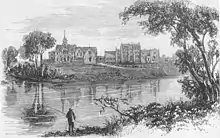
Around 1834, the Rector of Sherbrooke and Lennoxville Rev. Lucius Doolittle M.A. (1800–1862, American) from New England built Elmwood, to serve as a rectory of the Sherbrooke-Lennoxville mission. It is still standing at 43 Queen Street. (Elmwood Hotel Today). With assistance from Edward Chapman (M.A., Cambridge) and financial support from the church policy supporting public education in the province, he opened a school in a wing of the rectory, in 1836 which became the Lennoxville Classical School. The school was designed for "the education of sons of English Gentlemen", as the local anglophone and Protestant elites (especially the ones in the United Empire Loyalist) settling in the Quebec region were in need of a suitable preparatory school for their children.[24][25][12][13] Lennoxville Classical School was modeled on the great public schools of Britain, especially Eton College but provided a bilingual environment and an immersion into Canadian culture.[11][4]
Bishop's University established in 1843 as Bishop's College and was affiliated with the University of Oxford in 1853, the school remained under the Anglican church's direction from its founding until 1947.[8][26] At the beginning of the establishment, the main students came from the merchant/political families of the Gault, McConnell, MacLernon, Price, Molson, MacDougall, McNaughton in the Golden Square Mile residential area of Montreal.
In 1861 the foundation stone of the first school built on the Bishop's University site was laid by the last office holder of the Commander-in-Chief, North America General Sir Fenwick Williams, of Kars, who was a personal friend of Mr. Rawson, and who took a great interest in the Institution. The new school was a handsome Gothic building, surmounted by a tower—a wing being added to it in 1864.
Notably in the Classical School Era, Sir James David Edgar, KCMG PC QC (August 10, 1841 – July 31, 1899) was educated at the School, where his father James Edgar of a Peerage of Scotland decent was appointed the Second Master by the Rev. Lucius Doolittle. Sir Edgar eventually became the 7th Speaker of the House of Commons of Canada, and was given a knighthood by Queen Victoria.[27]
At Little Forks, in Bishop's University

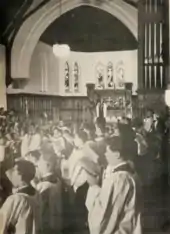

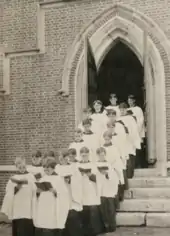

"Bishop" in the school name today comes from the Lord Bishop of Québec and Montréal, The Right Reverend Dr. George Mountain (DCL, Oxford) who was also the first Principal of McGill College from 1824 to 1835 and the founder of Bishop's University.[28] In 1843, the Lennoxville Classical School became Bishop's College School, under the direction of Edward Chapman (Headmaster 1842), the Bishop Mountain and the principle of BU, Jasper Hume Nicolls (a fellow of The Queen's College, Oxford). The original Prospectus referenced the foundation of the college, with clause five granting BCS the affiliation with BU:[29]
A Grammar School (or Junior Department) to be attached to the College, with one or more masters as may be required, who shall receive their appointments in like manner (i.e., to the Principal, and Professors)—The School to comprehend a special provision for the education of youths designed for business, or commercial pursuits.
— [30] (1845)
James Williams (bishop) (1825–1892) graduated from Pembroke College, Oxford in 1851 was appointed Headmaster of the grammar school in 1857.[31] The Bishops William Hall at the Little Forks Campus is donated completely by BCS alumni to honor their headmaster, yet after the transfer of the school across the river, the building became the property of Bishop's University.
Bishop's College applied to Queen Victoria for a royal charter and received it in 1853 highlights providing education for young people in Lower Canada when BCS was a constituent part of the Bishop's College, and where then Bishop's University today was the University of Bishop's College.[14] There was no gymnasium in those days, but the boys had bars, swings, etc., in one corner of the play-ground. From 1860 onwards, the surroundings of the school began to develop substantially. The Canadian Pacific Railway (CPR) located a station in Lennoxville. It would now take only 4 hours to Ottawa, 6 hours to Toronto and 8 hours to New York from BCS by train. The student body began to grow more diverse.[30] In 1864, the first Governor General of Canada after the Canadian Confederation, Lord Monck visited BCS with Lady Monck, a quote was left:[30]
The boys are more like English boys than any I have seen out here, and pride themselves on their English cheer. They seem to have the same love, and respect for their college as Eton boys have for Eton.......... Lennoxville is the Eton of Canada, and it is a charming and civilized place; the boys seem very gentlemanly, and well looked after.
BCS Cadet Corps #2, the oldest continuous service corps in Canada, was formed in 1861 as the Volunteer Rifle Company in the Fenian Raids and the for facing the threats of the North from the American Civil War by the BCS Rector/BU Principal Rev. Dr. Thomas Adams (Oxford).
During the American Civil War, the president of the Confederate States of America, Jefferson Davis sent his two sons Williams and Jefferson Jr. to BCS and her daughter at Couvent du Sacré-Coeur, he eventually lived on BCS campus and Lennoxville with his wife for a while before his imprisonment for treason.
In October 1879, BCS obtained financial independence from the Bishop's University and established the Bishop's College School Acossiation under a capital stock of five hundred dollars registered under the company act of Québec, through an act passed in the Legislative Assembly of Quebec forming a corporation that forms by the Lord Bishop of Quebec and 11 other members. [33] The school also used historically the Latin name of "Episcopi Collegium de Lennoxville" and French name "Collège Épiscopal de Lennoxville"[4] The Mayor of Sherbrooke and the influential leader in the Eastern Townships Richard William Heneker acted as the first chair of the BCS Board. His son General Sir William Heneker KCB, KCMG, DSO subsequently attended BCS. The Act passed in the legislature requires the shareholders of the schools to meet on the third week of every September for a general annual meeting (GAM), which, until today BCS holds open-house on that week and invites its alumni to attend.
Independence of the BCS Association
.png.webp)

In 1865, some faculty of BCS including the Rev. Charles H. Badgley was summoned by the Anglican Church to establish a preparatory institute in Ontario for Trinity College, this school eventually become Trinity College School and Badgley acted as the first headmaster.
In 1874, BCS sister school King's Hall, Compton was founded by BCS Rector Bishop James Williams as Compton Ladies College who acted as the chairman.
In 1880, the school was temporarily closed due to the spread of typhoid fever.[34] The same year, The inventor of Am Radio, Reginald Fessenden at the age of fourteen was granted a mathematics mastership and a full scholarship at University Bishop's College. He taught to the younger students (some older than himself) at the School, while simultaneously studying with older students at the college. At the age of 18, he left the school for Edison.
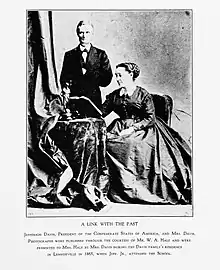
In 1888, a young Oxford graduate George Wollcombe, BA, started his career at Bishop's College School and Bishop's University when he was invited by the BCS Rector/BU Principal Rev. Dr. Thomas Adams (Oxford). In 1891, he was recommended by the head of Bishop's, and some Ottawa-based parents of his BCS students to start a school there. The Ottawa BCS-styled school eventually became Ashbury College today where he served as the headmaster for 42 years from 1891 to 1933.[35] He still found time regularly to make the four-hour train journey to Lennoxville to teach his classes. He obtained an ad eundem Master of Arts from Bishop's University in 1906 without actually enrolled as a student by the arrangements of Bishop's with Oxford. Rhode Scholar Dr. C.L. Odgen Glass also graduated from BCS and BU in 1935 and served in Ashbury as the fourth Headmaster, but later returned to BCS.[36] The BCS-Ashbury Cup, the Oxford University, and Bishop's University arms presented on the stained glass in Ashbury Memorial Chapel are signs of the traditional friendship between these institutions.[37] There is also a record of the BCS-Ashbury Cup winners in the BCS Ross Hall (Dining Hall). Wollcombe also eventually became the headmaster of BCS later.
In 1891, there was a major fire in BCS buildings on the Bishop's University campus, architect Alfred Arthur Cox (architect) designed several buildings on campus including Dining Halls (1899), Kitchen (1899), addition to the Library (1899), new lecture rooms (1899).[38] BCS moved to its new campus on Moulton Hill across the river in 1922 as BU refused to sell the land. The opening ceremony was held by the Canadian governor-general Duke of Devonshire and General J. K. L. Ross. The BCS choir, founded in 1878, was once considered as the best boys' choir in Canada.[4] The original BCS campus remains today as the building of the science labs, New Arts, at Bishop's University.
On Moulton Hill: The era of the Great Wars

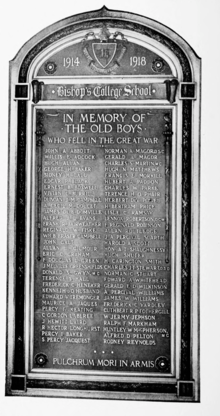
Bishop's prepared its students by then to pass the difficult McGill University matriculation examinations. Graduates gained admission to Oxford University and Cambridge University. A large range of students such as Norman Webster, David Wanklyn, P.T. Molson, the prior headmaster Odgen Glass, obtained the Rhodes Scholarship.[11]


BCS Cadet Corps #2 is the oldest continuous service corps and the only cadet corps to receive battle colours in Canada in the Fenian Raids. It was formed in 1861 as the Volunteer Rifle Company. Legend has it that BCS received their colours for shooting a cow on the Canadian / US border. However, the cadet corps of Upper Canada College has a similar legend featuring a cow, so the accuracy of this story remains in doubt.[15] In May 1989, the school's annual cadet inspection was inspected by The Duke of Edinburgh with a crowd of two thousand people.[16]
In 1901, Albert Grey, 4th Earl Grey visited Bishop's University and BCS for a speech to promote the loyalty to the empire. The Royal Military College in Ottawa often posted advertisements in the BCS Magazine during this period. Of the Lennoxville boys who attended the Royal Military College, no less than fifty percent won commissions.[30][19] Alumni Andrew McNaughton was the Minister of National Defence of Canada by then and the radio inventions of Reginald Fessenden permitted the information transmission on battlefields.[39]
A large percentage of students who served lost their lives.[19] A stained glass window and War memorial plaques were erected as lists of honors for the Old Boys.[40]
In 1901, the cadet corps took part in the Guard of Honour during the visit of Duke (later King George V) and Duchess of York to Sherbrooke. The Cader Corps was also inspected by the Duke of Devonshire, King Edward VIII in 1919, King George VI in 1939 and Queen Elizabeth The Queen Mother in 1962.[15] In May 1989, the school's annual cadet inspection was inspected by The Duke of Edinburgh with a crowd of two thousand people.[16] The Duke also granted the school's new coats of arms registered under the Royal Heraldry Society of Canada.[17]
Alumni Sir William Price (1867–1924) was one of the organizers of Valcartier Military Camp (now CFB Valcartier) where BCS students start their year with Cadet Orientation Camp.[41]
Many of the trees and plants on campus today were personally planted by Headmaster S.P. Smith in 1917, which the Smith residence took his name.
Canadian/Québécois statehood with BCS
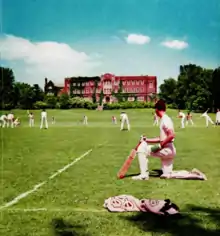

BCS is known to be an active Canadian Nationalist and prior to being a British Loyalist, where many leaders in the Dominion affairs such as the 7th Speaker of the House of Commons of Canada Sir James David Edgar was raised. Even the Rector of BCS during the Canadian Confederation, the Rev. Henry Hopper Miles (LLD, McGill) was the representative of the Eastern Townships in the London Conference of 1866. The school also collected the first-ever raised Canadian flag in a blessing ceremony a few hours before the Canadian Parliament Hill in 1965. The flag was donated by BCS alumni, a WWII veteran Okill Stuart, who also invited Prince Philip for an inspection visit to BCS. The flag is permanently kept in BCS Chapel,[42] in Québec, where a strong sense of separatism is presented.
In 1989, HRH the Prince Philip visited the school and inspected the annual cadet inspection. More than 2000 people was attended. Subsequently the Duke made a speech in the school chapel and unveiled a plaque for the United Empire Loyalists recognizing the school's past 150 years of history. The Coat of Arms and royal charter after the merger with King's Hall was also presented.
Also in 1989, the author of the Universal Declaration of Human Rights, John Peters Humphrey conveyed an intensive speech in BCS Politics Class based on the recent events such as the Meech Lake Accords and the Canadian Charter of Rights and Freedoms and his own opinion on Quebec Nationalism & Canadian Nationalism for the first time. He deliberately emphasized individual human rights over that of the collective group. He surprisedly ended with an almost urgent tone advising the students at BCS to think critically and continue his legacies.[43]
The modernization of the school

.png.webp)
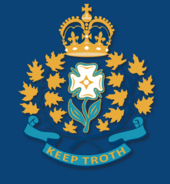

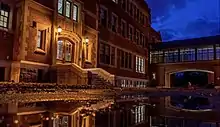


In 1941, The headmaster the Rt. Rev. Edward Bidwell left to become the Assistant Bishop of Canterbury and the Bishop of Ontario. In 1955, the 18th Governor General of Canada the Rt. Hon. Vincent Massey inspected the BCS cadet corps. In 1958 the school gym/ballroom was consecrated as St.Martin's Chapel by order of the Lord Bishop of Québec, The Rt. Reverend Philip Carrington and BCS students no longer used the chapel at Bishop's University.[4] An organ was installed behind the Cross in 1958. A stained glass window was given to BCS during the closing ceremony of St. Helen's School, Dunham, Québec. It is now installed at the top of the staircase to the chapel. BCS has grown more secular entering into the 21st century.
In 1972, its sister school King's Hall, Compton was amalgamated with BCS under the direction of both school's boards as well as the Québec government under the Company Acts of Québec. Consequently, BCS became one of the first co-ed boarding schools in Canada.
Québec's CÉGEP system was developed in 1976, banning the High School graduates from entering into universities directly. BCS is one of only seven high schools in Québec that offering Grade 12 as an alternative to this system[44] and one of the few English university-preparatory schools that does not need a certificate of eligibility following the language law Bill 101.[45]
Since 1980, when Terry Fox ran his Marathon of Hope, BCS has participated annually in the Terry Fox Run. Today, this fundraising event remains mandatory for all students. BCS also participates enthusiastically in Orange Shirt Day to raise awareness of abuse in the Canadian Indian residential school system. In 1981, Few other prominent Canadian independent schools and BCS came together to form an alliance as a national network for member schools supporting collaborative initiatives in leadership, education, management and governance. The organization continues today as the Canadian Accredited Independent Schools (CAIS+).
Sunday Services at BCS ended in the 2000s. BCS no longer has full-time chaplain but the Festival of Nine Lessons and Carols, the Remembrance Day Service, daily Chapel Assembly remains and is managed by the Prefect, the student body and the school organist. The school also invites religious figures of various faiths for speeches. The most notable daily religious practice at BCS today is the singing of the Anglican hymns from red or green hymnals. The school hymn is And did those feet in ancient time (Jerusalem) and the song Spirit, Spirit of Gentleness is sung during a BCS spirit day where students wear in purple.
The school's class sizes are small. BCS offers options of the International Baccalaureate as well as provincial curriculums for Québec and New Brunswick. SAT preparation is also available. The school size is limited to under 300 students.
The first BCS summer camp was launched in 1961.
In 2005, the Hartland de Montarville Molson Hall OC, OBE, OQ was erected in 2005 donated by the Molson family of Montreal and the BCS/KHC alumni association, where the current library, student center and Doolittle's Cafteria locates.
In 2017, the Canadian Minister of National Defence The Hon. Harjit Sajjan and The Minister of Agriculture and Agri-Food The Hon. Marie-Claude Bibeau (MP for Sherbrooke) visited BCS and hosted a town hall in the School Chapel.
In 2018, the cadet corps was inspected by the fourteenth Principal and Vice-Chancellor of McGill University, past BCS parent the Canadian Governor-General The Rt. Hon. David Johnston and the Canadian Cadet Service Medal was introduced to the school. Her Excellency Sharon Johnston has helped voluntarily in the board of BCS [15] His five daughters attended BCS while Alexandra Johnston, Vice-President of the Canadian Broadcasting Corporation is a current member of the BCS board. In 2020, the first residence to be built in fifty years, Mitchell Family House, obtained the Prix d'excellence en architecture by Ordre des architectes du Québec in 2020.[46] As Bishop's University changed its name in the 1950s, from then on, the name "Bishop's College" is generally referred to as BCS in Canadian Media.
Today, BCS serves approximately 240 students with over 40 faculty. The campus consists of 26 buildings set on 270 acres (1.1 km2), including playing fields and woodlands. There are students from Canada, Vietnam, China, Korea, USA, England, France, Mexico, South America, Bahamas, Bermuda, Germany, Japan and Thailand among these over 40 countries [47]
King's Hall in Compton (KHC)


King's Hall in Compton was a girl's boarding school founded by the Anglican Diocese of Quebec in 1874 as the Compton Ladies College. It was founded by BCS Rector James Williams (bishop) who acted as the chairman. The institution was founded for a female education in the rural parts of the Anglican Diocese of Quebec and as a sister school to Bishop's College School which locates 30 mins apart. The school location was finally decided to be Compton, Quebec. The school changed its name to "King's" in memory of the coronation of King Edward VII. The Board of King's Hall was consisted of the Bishop of Quebec and 12 other members. The boarding school neglects to honor Daylight saving time.[48]
In the 1972–73 school year, girls joined school life when BCS and King's Hall, located 20 minutes apart, amalgamated. The original junior school, Bishop's Preparatory School, or Prep was changed into Glass House, and the KHC Gillard House was re-built on BCS campus to accommodate the female students. (Gillard House was named after Dr. A. E. Gillard. She was Headmistress at KHC from 1930 to 1968) The white rose in the school logo, coats of arms demonstrate recognition of KHC. The glass passage connecting two school buildings was built in honour of King's Hall. Many of the traditions of King's Hall have been absorbed by BCS, and the KHC Old Girls joined the BCS alumnus association.[49][17] Some of the girls' residences such as Glass and Gillard adopted the KHC coats of arms as their logo.
Former KHC campus in Compton

The King's Hall campus in Compton, Quebec was sold to a hotel group when the girls who had been students there were moved to the BCS campus in 1972. In 2018, due to financial difficulties, the hotel group sold this property to an unknown Chinese consortium from Toronto which, operating under the name King's Hall, began offering short-term language immersion courses to Chinese secondary students.[48] This new Chinese consortium has no connection whatsoever to the former educational institution, King's Hall, Compton Inc. founded in 1874 nor to Bishop's College School Inc. founded in 1836.[50][51]
Artifacts preserved from the KHC campus and transferred to BCS include various books, statues, and paintings, as well as chapel pews, six stained glass windows and the bell from St. James the Less Anglican Church in Compton where KHC students attended services.
Academics


BCS provides the tri-diploma program of the provincial curriculum of Québec (Diplôme d' études secondaires) for grade 7~11 and the New Brunswick's Canadian High School Diploma for Grade 11,12 along with optional only International Baccalaureate while AP courses and SAT preparation is also available.[23]
The school's senior students may be eligible to take credit courses at Bishop's University for advance standings through the BU Bridge Program. BCS is the only school in Canada providing such programs. The T.H.P. Molson Bilingual Option program at BCS offers the students with an exceptional opportunity to learn a second language and to benefit from the unique cultural richness of Québec and Canada. It is named after BCS alumni, Rhodes Scholar Thomas Henry Pentland Molson who is from the bilingual Molson Family. [52] The RDW. Howson Enrichment Centre provides free tutoring to the students every weeknight from Monday to Thursday.[22]
Diplomas and certificates offered upon graduation
| Year | Diploma 1 | Diploma 2 | Certificate |
|---|---|---|---|
| Grade 11 (Form VI) | Diplôme d'études secondaires (DÉS) - If Québec Ministry Exams passed | / | BCS Form VI Certificate of Completion |
| Grade 12 (Form VII) | Canadian High School Diploma (NB) (Everyone) | IB Diploma or certificates (optional only) | BCS Form VII Diploma of Matriculation |
Notes

Grade 11 (Form VI): The award of Québec Diplôme d'études secondaires (DÉS) by the Ministry of Education and Higher Education (Quebec) is subjected to the completion of 54 credits over two years (including 20 in grade 11) and the completion of the ministry examinations on History and Citizenship Education, Mathematics (CST or SN), English Language Arts, Français langue maternelle (native)/seconde, and Sciences (Technologic or Environmental). Otherwise, only the BCS School Certificate would be awarded.
Grade 12 (Form VII): BCS provides a High School Diploma that is accredited by the Canadian province of New Brunswick. This High School Diploma is recognized internationally. Credits in this program are granted by the Department of Education in New Brunswick. These credits have authority to count towards the New Brunswick High School Diploma. IB certificates and diploma is also available. In order to award the New Brunswick High School Diploma, students must earn a total of 17 credits in grades 11 and 12. This unique multi-curriculum program makes BCS one of the seven schools in Quebec neglecting the CÉGEP system for university admittance.
For the BCS School Certificate, the student must complete a minimum of the Bronze level of the Duke of Edinburgh Award, complete a community service requirement, and participate in the BCS Cadet program.
BCS Cadet Corps #2


BCS Cadet Corps #2 was formed by the BCS Rector/BU Principal Rev. Dr. Thomas Adams (Oxford), as the Volunteer Rifle Company during the Fenian Raids and the threats from the American Civil War in 1861. It is the oldest continous service cadet corps in Canada and the only one who received battle colours. The Cadets corps raised many renowned military leaders such as General Andrew McNaughton, Commander-in-chief, and Canada's Minister of National Defense during WWII, Brigadier General The Right Honourable Hamilton Gault, who raised the Princess Patricia's Canadian Light Infantry, the last privately raised regiment in the British Empire. Today, the Corps plays a major role in the lives of students, schools, and communities.[15]
Bishop's College School is affiliated with the Black Watch Regiment of Montreal and the Royal Canadian Army Cadets. Its program also has a strong link to Royal Military College of Canada. Typically, there are a few officers appointed by the Canadian Army to the school each year as the staff, teacher and cadet supervisor. In early May, the Corps sends two platoons and the Colour Party to march with the Regiment in their Church Parade on Sherbrooke Street and Saint Catherine Street in Montreal. The Annual Corps review is held on the Friday of May long weekend; this event includes demonstrations by the drill team and the band.[18]
Duke of Edinburgh's Award (BCS Scheme)

Bishop's College School offers all students, beginning in Form IV, the opportunity to earn The Duke of Edinburgh's Award, which is an international program that operates in more than 100 countries. Annually, the Lieutenant Governor of Quebec gives out the Award to its recipients in the school chapel.[53]
Introduced to Canada in 1963, the Duke of Edinburgh's Award is open to all young people between the ages of 14 and 25. The Award currently attracts some 30,000 participants annually and is operational in all 10 Provinces and 3 Territories.
There are three levels to the Award: Bronze, Silver, and Gold – each with an increasing degree of commitment. Within each level, there are four sections.[54] The completion on the bronze level of this Award is one of the school graduation requirements at BCS.
BCS has been a member of the Round Square Conference of Schools since the 1980s.[55]
Houses


BCS consists of 10 family-style houses (residences), two of which belong to the day students:[56]
- Glass (Senior Girls, 1971): in the Grant Hall Building. Named after Rhode Scholar C. L. Odgen Glass (former Headmaster, alumni) and the building was previously for the BCS Preparatory Primary School, "Prep".
- Gillard (Senior Girls), 1971 named after Headmistress Dr. A. E. Gillard.
- Grier North (Senior Boys, 1976) & Grier South (Junior Boys, 1976): Named after former Headmaster Colonel C. G. M. Grier, CO of the Royal Canadian Army in 1943.
- Smith (Senior Boys) : Motto: Probitas, Integritas, Autonomia.
- Mitchell (Senior Boys, 2020) : In 2020, Mitchell Family House obtained the Prix d'excellence en architecture by the Ordre des architectes du Québec.[46]
- Williams (Junior Girls, 1936) : Named after BCS's fifth headmaster, Oxford graduate Reverend James Williams (bishop). Bishop William Hall at the BCS historical Little Forks Campus is also donated completely by BCS alumni to honor their headmaster, yet after the transfer of the school across the river, the building became the property of Bishop's University.
- McNaughton (Senior Boys, 1971) Named after Andrew McNaughton, Minister of National Defence of Canada during WWII. Chair of the United Nations Atomic Energy Commission
- Ross (Day Students): Named after Commander alumni J. K. L. Ross, CBE BCS' 1886 who also donated the J.K.L. Ross House (Ross'House) in McGill University. (Institute and Centre of Air and Space Law)
- Chapman (Closed/pending renovation).
Williams House has alternated between being a boys' house and a girls' house over the years.[57]
Traditionally, the Houses have had a healthy inter-house rivalry competing against one another in Track and Field, the annual XC running race, for the House Cup in Carnival and other events held annually.
BCS Multilingual Festival of Nine Lessons and Carols
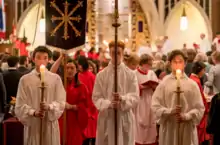
In Canada, the Festival of Nine Lessons and Carols is displayed in a multilingual method at BCS since 1890s where the Nine Lessons are read in nine languages/dialects. As BCS is the oldest Episcopal-background School in Canada, located in a French-speaking province and the school consists of over 40 nationalities. This is the only case in the world where the service is multilingual and was bilingual in English and French when first introduced by its 6th headmaster and Chairman of King's Hall, the Anglican Bishop of Quebec James Williams (bishop), a graduate of Pembroke College, Oxford.
Controversy
In 2007, a class action was launched by several former students who alleged physical, mental, and sexual abuse by masters, head boys, and prefects during the 50s and 60s. One of the foremost perpetrators was Harold Forster, a Cambridge-graduated Anglican priest, and the school's chaplain and choir director. He also taught at Eton College. Forty-three known victims came forward before the class action was settled in early 2010 by the school. Reverend Forster was killed in a train accident in England while teaching at Harrow School in the mid-60s. In 2013, the school owned up to the abuse in a private ceremony on school land.[58]
Athletics


At BCS sports are referred to as "creases". The school offers hockey, basketball, squash, lacrosse, volleyball, field hockey, swimming, soccer, cycling, tennis, yoga, golf, adventure training, horseback riding, touch football, and ultimate Frisbee. Students are required to participate in three creases each year: one in the fall, the winter, and the spring. Girls, boys, and mixed teams compete intramurally as well as inter-scholastically. In recent years, BCS teams have won championships in basketball, football, rugby, soccer, swimming, and tennis. Facilities including a fitness center, double gym, approximately 5 km of outdoor running/nordic skiing trails, an archery station, a 40-foot (12 m) climbing wall, squash and tennis courts, and an indoor hockey rink. In addition, the School is in proximity to golf courses, curling, cross country and alpine ski centers, the aquatic facilities at Bishop's University as well as extensive public bike paths.
The school's website currently lists 26 creases (sports) to choose from.[59] Recently, creases were expanded to include arts-related pursuits in addition to the traditional athletic program.
The BCS hockey team was founded in 1914. The school's ice rink is the oldest indoor ice rink in Canada. It was established in 1925 with 25,000 $ donated by alumni, in an area of 175* 75 square feet. The team has various famous alumni such as Noah Dobson and Dawson Mercer in the NHL and ones such as Hartland MacDougall (1875–1947), Ernest McLea (1876–1931) in the pre-NHL era. Two of BCS alumni used to own the NHL team Montreal Canadiens: Edward Bronfman, OC & Senator Hartland de Montarville Molson OC, OBE, OQ .
In 2008, Stephan Lebeau was hired by BCS. Lebeau had won a Stanley Cup in 1993 with the Montreal Canadiens. His brother, Patrick, also played a short time in the NHL.
Since 2012–2013, BCS Hockey programme has two teams (U18 and U16) which both play in the Ligue de Hockey Préparatoire Scolaire (LHPS).[60] Special academic tutoring and scheme are granted to the players in need.
Arms, motto, crest, and memorials

%252C_and_badge_(middle_lower).png.webp)
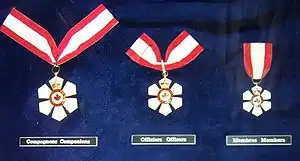

Arms and badge
Motto: RECTI CULTUS PECTORA ROBORANT; This phrase in Latin translates to "Good learning habits strengthen the hearts" which also stands the motto of Bishop's University.
BCS shared a crest with Bishop's University for over a century. However, with its growing independence and the amalgamation with King's Hall, a new coat of arms was needed. Registered in the Canadian Heraldic Authority, the coats of arms and the badge presented to BCS by Prince Philip in 1989 has the following characteristics:[17][61]
Arms: There is an argent on a Cross Gules an open book (bible) edged and bound Or in the canton a rose Argent barbed Vert seeded Or fimbriated Azure all within a bordure Purpure;
Crest: A mitre Argent the orphreys semé of maple leaves Gules; The mitre corresponds to the name of the school, " bishop's ". The maple leaves on the mitre indicate the Canadian base and identity of the school.
Symbolism: The Cross of St. George and the book are found in the arms of Bishop's University, for which the school was established as a feeder institution, hence the addition of a border. The Saint George's Cross shows a link to the Anglican Church and the Great Britain as a loyalist.
The book signifies BCS as an institution devoted for educational purposes. Purple is a colour used by bishops in the Anglican church and Christian religion in general, as well as being the school's colour symbol. The white rose was used as an emblem by King's Hall.
The badge combines elements of the emblems used by Bishop's College School and Kings Hall, the mitre and the rose: A rose Argent barbed Vert charged with a mitre Argent fimbriated Purpure the orphreys semé of maple leaves Gules.
Other crests

On the grant to BCS, the Sovereign's insignia of the Order of Canada was depicted below the Royal Arms of Canada due to the significant portion of BCS students obtaining this award. This is the only instance where the Sovereign's badge has been incorporated into a grant document.[62]
There are over fifteen other crests of BCS alumni or faculty families merged in the architecture of the School House. In the Ross Dining Hall, around 20 BCS partner schools' crest has been oil-painted on the wooden structures. Such as the ones of Upper Canada College, Ashbury College, St. Michaels University School, Appleby College, Deerfield Academy (US), etc.
BCS uniform and ties

Students are awarded school ties based on their involvement in various clubs and activities, to mark membership in a residence, to recognize academic or athletic achievement, or to acknowledge a leadership position. There are over thirty different ties including House ties, Band and Choir ties, Prefect ties, Yearbook ties, First Team ties, Achievement ties, and Chapel Warden ties. [19]
There are three types of uniforms at BCS: No.1 uniform, No.2 and the Cadet Uniform. The boy's cadet uniform adopts the style of the Black Watch back in 1936 while both gender uses the Black Watch beret.
Black Watch tartan
The Girl's Uniform at BCS features a green and black kilt, the tartan associated with the Black Watch. The ranks of the Royal Canadian Army Cadets are allowed to be sewn onto the BCS school blazer.
Notable BCS/KHC people
Notable faculty

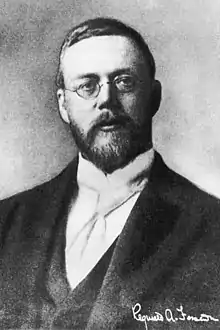
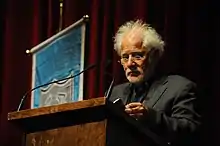

Famous faculty include Nobel Prize laureate Rudyard Kipling, an English master;[30][63] Reginald Fessenden, the inventor of radio, a Math teacher; and Prince Alexis S. Troubetzkoy, international author notable for his works on Russian history. (who was also the headmaster of Selwyn House School, Appleby College and the Toronto French School )[30] Famous coaching staff include singer Robert Bédard (1931– ) who was the President of Tennis Québec & the Vice-President of Tennis Canada, a French and geography teacher; and director of the hockey program, Stéphan Lebeau, professional hockey player who won a Stanley Cup with the Montreal Canadiens.[64][65][66]
Notable alumni
Despite the small size of its student population, no less than forty former students have been inducted into the Order of Canada, ten to the Distinguished Service Order, five to the Order of the British Empire & Order of the Bath, three to the National Order of Quebec & Order of St Michael and St George, two to the Order of Ontario and one Royal Victorian Order. At least fifty former students have been elected as member of parliament (regardless of location) with Sir James David Edgar BCS'1850 named the Speaker of the House of Commons of Canada. Eight have been named to the Queen's Privy Council for Canada. Seven BCS-ers have been named Rhodes Scholars.[7][8]
Famous alumni includes: Michael Ondaatje, Paul Almond, Reginald Fessenden, Jake Eberts, Noah Dobson, Dawson Mercer, Tom Nütten, Scott Abbott, The Right Hon. Conrad Black, Norman Webster, The Hon. Hartland Molson, Stuart McLean, The Hon. J. K. L. Ross, General Sir William Heneker,The Hon. General Andrew McNaughton, Hartland MacDougall, William Watson Ogilvie, The Hon. Harry Woodburn Blaylock, John Calder, George Hurst, Ntare Mwine, Scott Abbott, Robert Bédard, Diana Fowler LeBlanc, The Hon. George Harold Baker, Lieutenant General Kenneth Stuart, Major General William Henry Pferinger Elkins, John H. C. McGreevy, The Right Hon. Andrew Hamilton Gault, Sir James David Edgar, 2nd & 3rd Baron Shaughnessy of Montreal, Sir William Price, The Right Hon. Greville Janner, The Hon. Colin Kenny, The Hon. Matthew Henry Cochrane, The Hon. Arthur Deane Nesbitt, Robert Fowler (diplomat), Peter Bronfman, Sir Frederick Oscar Warren Loomis, Sir Hugh Allan, General Sir Henry Edward Burstall, Anthony Graham, Derek Bryson Park, etc.
The Charter of the Old Boys Association of BCS (an Old boy network) was officially granted on page 295, Chap 93 of the Statue de la province de Québec in 1901, and later changed to the BCS Alumni Association after the merger with KHC. The Heneker-Williams society honours people who, by leadership and example, have set the standard for volunteer support of BCS and KHC. Leader of a graduating classes of alumni in specific geographical locations are referred as Class Agents; BCS Ambassadors manage the communications for reunions. The school's advancement office holds activities annually including Homecoming weekend, alumni hockey tournaments & rugby games, as well as dinners and social gatherings in cities throughout the world. There are around 7,000 live alumni today.
As the school was Anglican, the school also raised a lot of religious figures, not limited to: The Most Rev. Clarendon Worrell, the Right Rev. James Williams (bishop),The Right Rev. Edward John Bidwell, The Right Rev. Lennox Waldron Williams, The Right Rev. Tim Matthews, etc.
Career Day is an opportunity for alumni and parents share their expertise and professional work experience with current students. The annual BCS Ondaatje Endeavour is found by the Michael Ondaatje Foundation.
BCS publications

Bishop's University and BCS shared the same yearbook, the Mitre prior to the 20th century. The first edition of the independent BCS yearbook, then known as the BCS Magazine was published in 1880. The yearbook remains autonomously edited by the students. The BCS Newsletter (BCS Bulletin), BCS Brief & BCS Communications, Keep Troth magazine (for KHC old girls), are seasonal publications by the school advancement office.
In media
Films

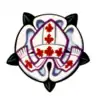
The 2001 film Lost and Delirious directed by Léa Pool and loosely based on the novel The Wives of Bath by Susan Swan premiered at the 2001 Sundance Film Festival.[67] and was shot entirely in Lennoxville. Many scenes were shot at BCS as well as Bishop's University. BCS' wooded trails and residences were used as was Ross Dining Hall, which was the setting of major conflicts in the film.
The 1983 movie Ups & Downs about prep-school life, directed by the award-winning alumnus Paul Almond and Lewis Evans (alum and retired headmaster), was inspired by the setting of BCS though filmed somewhere else.[68]
Literature
Rudyard Kipling (1865–1936) who won the eighth Nobel Prize in Literature has written some poems while teaching temporarily at BCS in 1896 (then located on the BU campus), such as :[30][69]
Poems of Home: III. Fun for Little Folk "There was a small boy of Quebec" There was a small boy of Quebec Who was buried in snow to his neck; When they said. "Are you friz?" He replied, "Yes, I is— But we don't call this cold in Quebec.
Other literary works include From Moulton Hill to Little Forks by J. Graham Patriquin, Wake Me in the Morning by Giles Walker, [70] and Seven Days in Hell: Canada's Battle for Normandy and the Rise of the Black Watch by David O'Keefe (historian),and The History of King's Hall, Compton, 1874-1972 by Elizabeth Hearn Milner.[71]
See also
References
- Thomson, Ashley; Lafortune, Sylvie (1999). Handbook of Canadian Boarding Schools. Toronto: Dundurn Press Ltd. p. 488. ISBN 1-55002-323-3.
- Le Bishop's College School attire des élèves de partout au Canada et à l'international. (2019, September 27). Retrieved June 06, 2020, from https://www.latribune.ca/la-vitrine/formation-enseignement-2019/le-bishops-college-school-attire-des-eleves-de-partout-au-canada-et-a-linternational-f162061d23b914437460fa4ee6322f97
- Bishop's College School continues to attract qualified students from both Canada and around the world. (2019, September 07). Retrieved June 06, 2020, from https://montrealgazette.com/sponsored/life-sponsored/bishops-college-school-continues-to-attract-qualified-students-from-both-canada-and-around-the-world
- "From Little Forks to Moulton Hill Vol 2" – via Internet Archive.
- The others being Upper Canada College, King's Edge Hill and St.john's reavenscourt
- "Ranking the oldest private schools in Canada". www.ourkids.net.
- Rhodes Scholars:Ogden Glass, P.T.Molson, David Wanklyn, F. R. Scott, Frank Ernest hawkins, John Farthing
- "From Little Forks to Moulton Hill Vol 1" – via Internet Archive.
- "Bishop's College School | Discover BCS". www.bishopscollegeschool.com.
- Page 44~50, My Canadian Leaves:An Account of a Visit to Canada in 1864-1865 By Frances Elizabeth Owen Monck, The archives of the University of California
- Siggins, Maggie (June 2, 1979). Bassett: John Bassett's Forty Years in Politics, Publishing, Business and Sports. James Lorimer & Company. ISBN 9780888622846 – via Google Books.
- The Mitre (1921–1922 issue). (1922). Lennoxville: Bishop's University.
- Journals of the Legislative Assembly of the Province of Canada (2nd ed., Vol. 8, Ser. 28). (1849). Ottawa, Canada: Canada. Parliament. Legislative Assembly.
- "1843–1853 | Bishop's University". November 9, 2018.
- "BCS Bulletin Winter 2001" – via Internet Archive.
- Heritage, Canadian (August 23, 2017). "Past Royal Tours". aem.
- General, The Office of the Secretary to the Governor. "Bishop's College School [Civil Institution]". reg.gg.ca.
- "The Black Watch (Royal Highland Regiment) of Canada – Cadets – Bishop's College School". www.blackwatchcanada.com.
- "Bishop's College School | Our History & Traditions". www.bishopscollegeschool.com.
- "The Inventions of Reginald Fessenden: Part XI", Radio News, November 1925, pages 590–591, 712–718
- SSOE - Electrical and Computer Engineering - About. (n.d.). Retrieved December 09, 2020, from https://www.engineering.pitt.edu/Departments/Electrical-Computer/_Content/About/About/
- "Bishop's College School | University Preparation". www.bishopscollegeschool.com.
- "Bishop's College School | Our Approach". www.bishopscollegeschool.com.
- ""Siggins, M. (2000). ""Bassett: John Bassett's forty years in politics, publishing, business and sports"" (pp. 24–27). Toronto: James Lorimer & Company Limited.
- "Bishop's College School | Discover BCS". www.bishopscollegeschool.com.
- "Bishop's University | The Canadian Encyclopedia". www.thecanadianencyclopedia.ca.
- McLean, M. J., & Stamp, R. M. (1998). My dearest wife the private and public lives of James David Edgar and Matilda Ridout Edgar. Toronto: Natural Heritage/Natural History.
- "Historical timeline | Bishop's University". June 30, 2015.
- The Mitre (1894–1895 issue). (1895). Lennoxville: Bishop's University.https://www.ubishops.ca/wp-content/mitre-archives/1894-1895-Issue6.pdf
- The Church Weekly 24 Jul 1896 Page 16
- "Chronology of Bishop's University Buildings | Bishop's University". November 9, 2018.
- Page 44~50, My Canadian Leaves: An Account of a Visit to Canada in 1864-1865 By Frances Elizabeth Owen Monck
- Statutes of the Province of Québec 1878. (1878). Québec.
- The Princeton Union, 16 Dec 1880 Thu Page 3
- "Full text of "The Ashburian 1962"". Retrieved December 22, 2018.
- Panayotidis, E. L., & Stortz, P. J. (2006). Historical identities: The professoriate in Canada (p. 169). Toronto: University of Toronto Press.
- WOOLLCOMBE, S. (2016). Chapter IV. In LIFE AND TIMES OF GEORGE PENROSE WOOLLCOMBE: Educator. FRIESENPRESS.
- http://www.dictionaryofarchitectsincanada.org/architects/view/1626 Archived 2012-04-25 at the Wayback Machine Alfred Arthur Cox (architect)
- "Generals – A.G.L McNaughton". Canada and the First World War.
- http://www.cmp-cpm.forces.gc.ca/dhh-dhp/nic-inm/sm-rm/mdsr-rdr-eng.asp?PID=7728%5B%5D War Memorials
- "Bishop's College School | Cadets". www.bishopscollegeschool.com.
- "50th Anniversary of the Canadian Flag". Bishop's College School. February 16, 2015.
- Lee, R. (2017, March 13). History of Human Rights in Canada. Retrieved July 04, 2020, from https://blogs.mcgill.ca/historyofhumanrightsincanada/2017/03/13/john-humphrey-speech-at-bishops-college-school/
- Kalbfuss, Elisabeth (December 12, 2018). "Why do some private schools offer Grade 12?".
- "English Language Eligibility". www.lcc.ca/. Retrieved 30 March 2020.
- Prix d'excellence en architecture 2020 – Le public invité à voter pour son projet coup de cœur
- "Bishop's College School | International Students". www.bishopscollegeschool.com.
- Checkup, C. (2016, March 20). A boarding school that had its time zone | CBC Radio. Retrieved June 06, 2020, from https://www.cbc.ca/radio/checkup/blog/a-boarding-school-that-had-its-own-time-zone-1.3491164
- "King's Hall (Compton, Que.) – Eastern Townships Archives Portal". www.townshipsarchives.ca.
- Eastern Township Historic Archive. (n.d.). King's Hall (Compton, Que.) - Eastern Townships Archives Portal. Retrieved July 04, 2020, from https://www.townshipsarchives.ca/kings-hall-compton-que
- Radio-Canada. (2018, October 31). Le King's Hall, à Compton, de nouveau vendu. Retrieved July 04, 2020, from https://ici.radio-canada.ca/nouvelle/1133019/kings-hall-compton-ecole-communaute-chinoise-toronto
- "Bishop's College School | Bilingual Option". www.bishopscollegeschool.com.
- "The Duke of Edinburgh's Awards Ceremony". Bishop's College School. May 23, 2017.
- "Home". The Duke of Edinburgh's Award.
- "Bishop's College School".
- https://www.bishopscollegeschool.com/student-life/residences
- "Bishop's College School | McNaughton House". www.bishopscollegeschool.com.
- The Montreal Gazette; The Harrow Observer; The Globe and Mail; CBC-TV and Radio; CJAD, CTV-TV; Global TV; The National Post; The Sherbrooke Record; La Tribune, Le Journal de Montreal; https://ca.ratemyteachers.com/bishops-college-school/36619-s/stats, The BCS Bulletin; Archived 2017-10-26 at the Wayback Machine
- "Bishop's College School | The Student Community". www.bishopscollegeschool.com.
- "Révolution dans le monde du hockey". La Tribune. October 30, 2013.
- The announcement of the Letters Patent was made on July 22, 1989, in Volume 123, page 3347 of the Canada Gazette.
- MVO, Christopher McCreery (January 1, 2018). Order of Canada, Second Edition: Genesis of an Honours System. University of Toronto Press. ISBN 9781487500948 – via Google Books.
- Page 3, The Gazette 02 June 1896
- Canada Sports Hall of Fame. "Honoured Members: Robert Bédard". Retrieved 12 February 2011.
- RDS.ca. "Robert Bédard, tennis (French)". Retrieved 12 February 2011.
- The Canadian Encyclopedia. "Bédard, Robert". Retrieved 12 February 2011.
- allmovie.com
- Reid, M. (2015, June 18). Big Picture: Filmmaker Paul Almond was honorary Victorian. Retrieved June 19, 2020, from https://www.timescolonist.com/big-picture-filmmaker-paul-almond-was-honorary-victorian-1.1973808
- Bliss Carman, et al., eds. The World's Best Poetry. Volume I. Of Home: of Friendship. 1904.
- Goldman, N. (n.d.). Wake Me in the Morning: Uncovering A Secret Life Reviewed By Norm Goldman of Bookpleasures.com. Retrieved June 19, 2020, from http://www.bookpleasures.com/websitepublisher/articles/4227/1/Wake-Me-in-the-Morning-Uncovering-A-Secret-Life-Reviewed-By-Norm-Goldman-of-Bookpleasurescom/Page1.html
- Montgomery, M. (2020, June 02). Remembrance WWII: Canada's Black Watch in the tragic victory at Verrieres Ridge. Retrieved June 19, 2020, from https://www.rcinet.ca/en/2019/11/05/remembrance-wwii-canadas-black-watch-in-the-tragic-victory-at-verrieres-ridge/